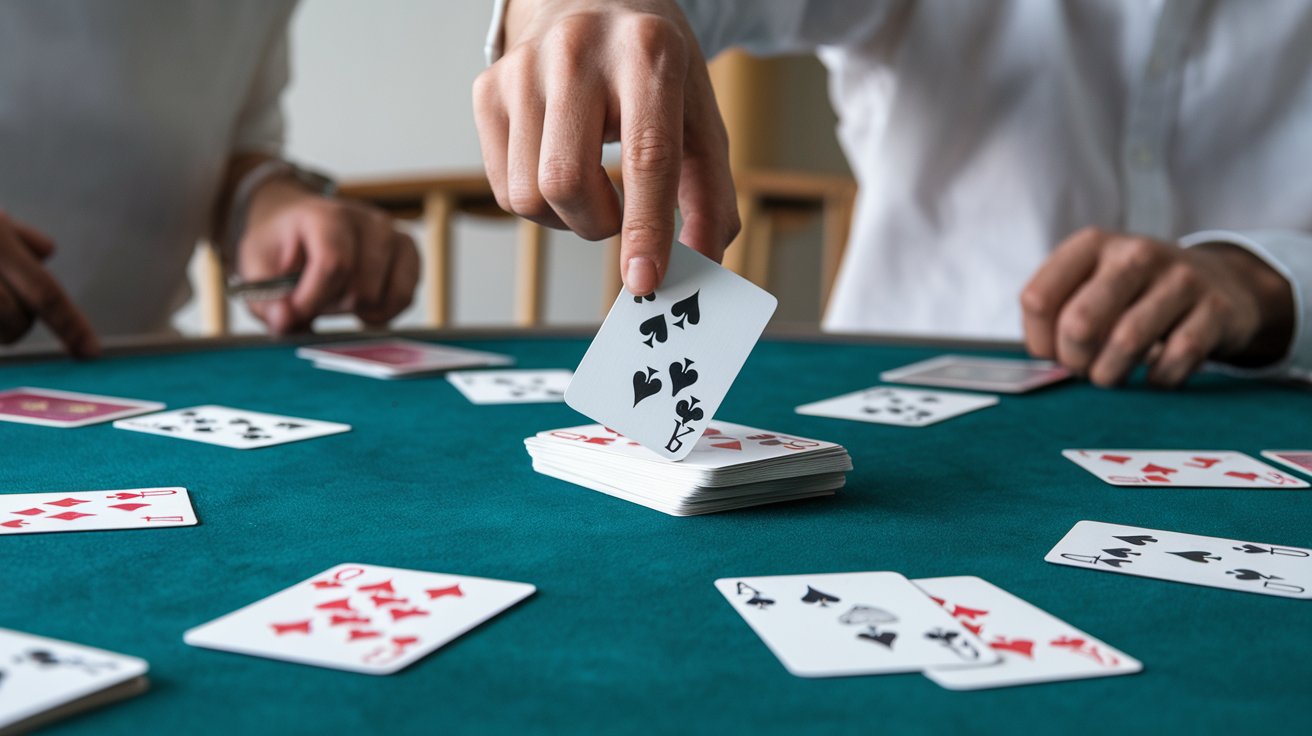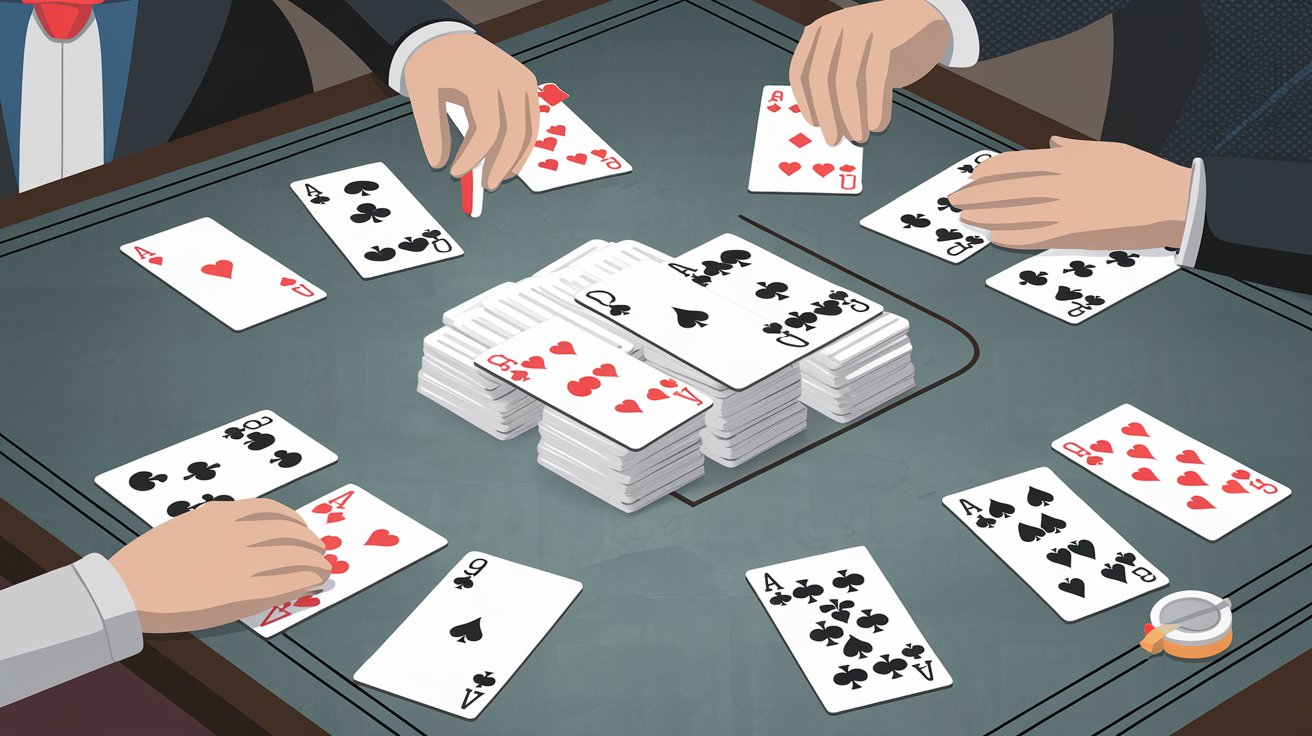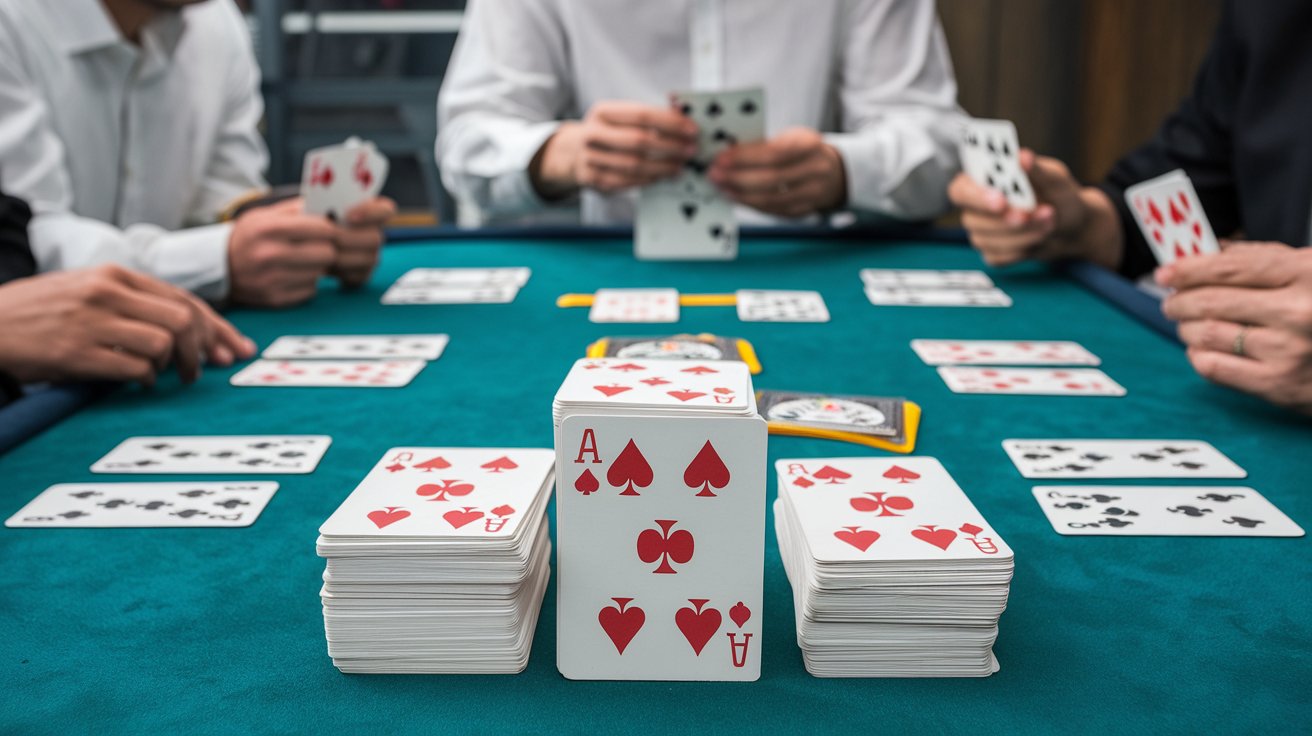Rummy is a classic card game that combines strategy, skill, and a bit of luck. It’s widely enjoyed by players of all ages, thanks to its easy-to-understand rules and the endless opportunities for strategic gameplay. One of the most important components of the game is the stock pile, yet many beginners often overlook its significance. Understanding the stock pile is crucial for becoming a skilled Rummy player.
In this comprehensive guide, we will dive into the concept of the stock pile in Rummy, explain its role in the game, and provide insights on how to effectively use it to your advantage. Whether you’re a beginner or an experienced player, mastering the stock pile will help you improve your game and make smarter decisions as you play.
What Is the Stock Pile in Rummy?

In Rummy, the stock pile refers to the remaining deck of cards that is placed face-down in the center of the table. This deck is where players will draw their cards during the game, and it plays a critical role in determining the flow of the game.
The stock pile is different from the discard pile (which is face-up and contains cards discarded by players during the game). While players can pick cards from the discard pile, they can only draw from the stock pile when they are unable or unwilling to draw from the discard pile.
The stock pile is an important strategic tool in Rummy, and it offers players multiple opportunities to complete sets and runs. As the game progresses, the stock pile becomes a shared resource that everyone will rely on, so understanding when and how to use it can be the key to victory.
The Role of the Stock Pile in Rummy
To understand how to use the stock pile effectively, it’s important to first look at its role in the game. Here are the key functions of the stock pile:
1. Drawing Cards
At the start of each player’s turn, they must draw one card. The card can either be taken from:
- The Stock Pile: This is the face-down pile from which players draw cards if they don’t want or cannot pick a card from the discard pile.
- The Discard Pile: The face-up pile where discarded cards are placed. Players can choose to pick up any card that is available in the discard pile if it helps them form a valid combination (set or run).
The stock pile is crucial for replenishing players’ hands when they don’t have useful cards in the discard pile. As the stock pile shrinks, the game begins to wind down.
2. Building Sets and Runs
The primary goal in Rummy is to form valid combinations known as sets and runs. A set consists of three or four cards of the same rank but from different suits, while a run is a sequence of three or more consecutive cards of the same suit.
- Drawing from the Stock Pile: When you draw from the stock pile, you are adding a new card to your hand that could potentially help you form a set or run. The stock pile allows you to build your combinations gradually, as the cards drawn can fit into your strategy.
- Strategic Considerations: If you draw from the stock pile, you may have a better chance of completing a valid combination since you won’t have to rely on the cards available in the discard pile (which are already visible to your opponents). However, the discard pile also offers the opportunity to complete sets or runs if the card you need is there.
3. The Stock Pile and Game Flow
As players continuously draw cards from the stock pile, the remaining cards in the pile begin to dwindle. Eventually, the stock pile will run out, which triggers the end of the game in many Rummy variants. Once the stock pile is exhausted, players may need to rely solely on the discard pile to complete their hands.
The use of the stock pile becomes especially important during the latter stages of the game when there are fewer cards left to draw. This is when players need to think carefully about their choices—whether to take from the stock pile or gamble on picking a card from the discard pile.
How to Use the Stock Pile Effectively in Rummy

Using the stock pile wisely is key to mastering Rummy. Here are some strategies for how to make the most of this important resource:
1. Monitor the Discard Pile First
Before automatically reaching for the stock pile, always pay attention to the discard pile. The discard pile can be a valuable source of cards, as it contains cards that your opponents have discarded and might no longer need. By selecting the right card from the discard pile, you can complete a set or run, saving you from drawing from the stock pile.
However, be cautious when picking up from the discard pile. If you pick up a card that is too obvious (like a 5 of Hearts when you already have the 4 and 6 of Hearts), your opponents will quickly notice and may start to play defensively.
2. Draw from the Stock Pile When You’re Stuck
If the discard pile doesn’t contain any cards that help you, it’s time to draw from the stock pile. Drawing a card from the stock pile is a safe bet when you don’t see any immediate opportunities in the discard pile. It provides a fresh card, and sometimes, a new card will help you complete your hand or provide you with options to meld your cards.
3. Track What’s Been Drawn
As the stock pile gets smaller, it becomes increasingly important to track which cards have been drawn. This will give you insight into which cards are likely to appear in the remaining deck, and help you make more informed decisions about whether to draw from the stock pile or the discard pile.
In competitive games, keeping track of the cards that have already been drawn and discarded is an essential skill. By doing so, you can anticipate what cards might be left in the stock pile, and adjust your strategy accordingly. If there are fewer cards left in the stock pile, consider what combinations you might still be able to form with the remaining cards.
4. Avoid Over-Reliance on the Stock Pile
While drawing from the stock pile is important, don’t over-rely on it. If you’re constantly drawing cards without forming sets or runs, you may be missing out on opportunities. Try to focus on using the discard pile effectively and melding your cards as you go.
You don’t want to wait too long to discard cards, especially high-value ones (like face cards and aces). Discarding cards early can help you avoid accumulating penalty points if your opponent goes out first.
5. Use the Stock Pile to Delay Opponents
If you’re playing in a multi-player game, you can also use the stock pile to your advantage by carefully managing your card choices. For example, if you’re aware that a certain card would complete an opponent’s set or run, you may choose to draw from the stock pile instead of taking a useful card from the discard pile. This prevents your opponent from completing their combination, giving you more time to improve your hand.
6. End the Game Strategically
When the stock pile is nearing exhaustion, consider how many cards remain in the deck and what you can still do with your hand. If the stock pile is nearly depleted and you haven’t formed a valid combination yet, it might be a good idea to strategically go out by discarding cards that leave you with fewer points. This tactic forces the game to end before your opponent can finish their combinations.
When Does the Stock Pile Run Out?

As the game progresses, the stock pile will get smaller and smaller with each draw. The round typically ends when:
- The stock pile runs out, and no cards are available for drawing.
- A player goes out by forming all their cards into valid sets and runs, discarding their last card.
When the stock pile runs out, players are only left with the discard pile. At this point, the game can become more tense, as players must rely solely on the cards available in the discard pile to complete their hands.
Strategies for Managing the Stock Pile in Different Rummy Variants
While the basic use of the stock pile applies to all Rummy variations, some versions of Rummy might require you to adjust your strategy slightly:
1. Indian Rummy
In Indian Rummy, which is typically played with two decks of cards, the stock pile plays a critical role in helping players form their sets and runs. Since players need two sequences (one pure and one impure), drawing from the stock pile can be crucial for completing these combinations, especially when you don’t have access to useful cards in the discard pile.
2. Gin Rummy
In Gin Rummy, with only two players, the stock pile is used more conservatively. Because players are trying to reduce the points in their hands by forming valid combinations, drawing from the stock pile helps players adjust their hands. You’ll need to monitor the stock pile carefully, as the game often ends with a knock once a player has formed valid sets or runs.
3. Kalooki Rummy
In Kalooki, which is often played with two decks and jokers, the stock pile is vital for managing the large number of cards needed for forming multiple sets and runs. Jokers are commonly used as wild cards, which can substitute any card in a set or run. Since Kalooki is a more dynamic version of Rummy, drawing from the stock pile can give players more opportunities to form combinations.
Conclusion
The stock pile in Rummy is a critical component of the game, offering players opportunities to draw new cards and complete their hands. Understanding when to draw from the stock pile, how to use it effectively, and how to manage the flow of the game can significantly impact your strategy and chances of winning.
By paying attention to the stock pile and utilizing the tips and strategies outlined in this guide, you can maximize your chances of success in Rummy. Whether you’re playing a quick game with friends or engaging in a more competitive setting, mastering the stock pile is a key element to becoming a skilled Rummy player.
So, the next time you sit down to play, remember to keep a close eye on the stock pile, plan your moves carefully, and enjoy the game!

Zareb Saleh is a journalist at Gulf Today and a ghostwriter for Gameoholic, specializing in gaming, technology, and digital culture. With a keen eye for industry trends, he delivers insightful stories that engage and inform readers.




